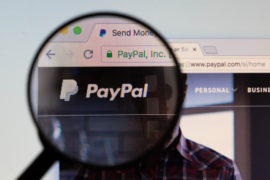Last Updated on Feb 25, 2020 by James W
When you’re trying to stretch your dollar, it can be infuriating to learn that grocery stores and supermarkets throw away over 4 million tons of food every year due to practices like buying too much in order to avoid aesthetically unappealing empty shelves, misunderstood sell-by and best-by dates, and poorly constructed packaging or rough handling during shipping. Take a deep breath, though; you can help with the sustainability problems our food system faces while finding bargains.
Everyone knows about the clearance shelf at the back of the store with dented cans, but here are some tips to find a bargain in other sections of the store while food shopping, use items that would otherwise go to waste, and stay safe while eating clearance food.
1. Understand sell-by and best-by dates.
The expiration date on your food may not not be accurate. There are few regulations on these dates, so it might be far in advance of the actual expiration date in order to move products faster and get consumers to buy fresh products instead of using previously purchased food. On the other hand, it might be an honest expiration date, especially if you’re buying dairy products or meats.
In general, a “use by??? date is more solid than a “sell by??? date, and tends to be used for items that may actually expire and cause food poisoning if not used before that date. “Best by??? dates are looser, and tend to be somewhere in the middle – the food may still be good afterwards, but the manufacturer wants you to use it before that date. The “sell by??? date is the least trustworthy, and simply a method of stock control.

2. Look for imperfect fruits and vegetables.
If you’ve only ever bought fresh foods from the supermarket and you’ve never seen what a carrot looks like just after it is pulled, you might be surprised at how many dents, bruises, and scars most vegetables have. The average consumer overlooks the imperfect fruits and veggies that are often discounted drastically and put on a special shelf in the fresh food section, but you can get a great bargain by being willing to do a bit of extra chopping or peeling.
By choosing imperfect foods, you support the farmers who have to waste thousands of tons of perfectly good, yet cosmetically unappealing, food. You reduce the good food going into the landfill, and you’ll benefit from consuming fewer “perfect??? preservative-laden foods. If this grosses you out, start by getting fruits and berries that you can blend into a smoothie so you don’t notice the bruises, or vegetables so you can easily cut around the bruises and get at least half the fruit for less than half the price.
3. Take advantage of day-old baked goods.
Bakeries have to discount their foods at the end of the day in order to get them to sell. You may be able to find bread that’s actually fresh, or a bulk bag of baked goods you can freeze and thaw as needed. Fresh bread is often a few days old by the time you eat it, so as long as you aren’t letting mold grow, it will taste just fine. Microwave day-old baked goods in a large paper bag after spritzing the outside of the bag with water and you’ll get a freshly-baked taste all over again.
Some supermarkets and grocery stores have a clearance section near the bakery, while others combine the baked goods with the general clearance area. If you’re not sure, ask the people working in the bakery when they tend to sell day-old goods and what time of day is best to get these deals.
A few simple tricks can help you get great bargains on food while doing your part to help sustain our food system and support the farmers, bakers, and other employees who produce our food. These small steps are more than most people bother to take, so you’ll get the secret inside track to food savings.
Author Bio:
Guest post contributed by Carla Gregson for PoshBingo.co.uk – bored? play bingo online. Carla is a freelance writer. She enjoys finding interesting ways to be thrifty. Her articles appear on various lifestyle blogs.




